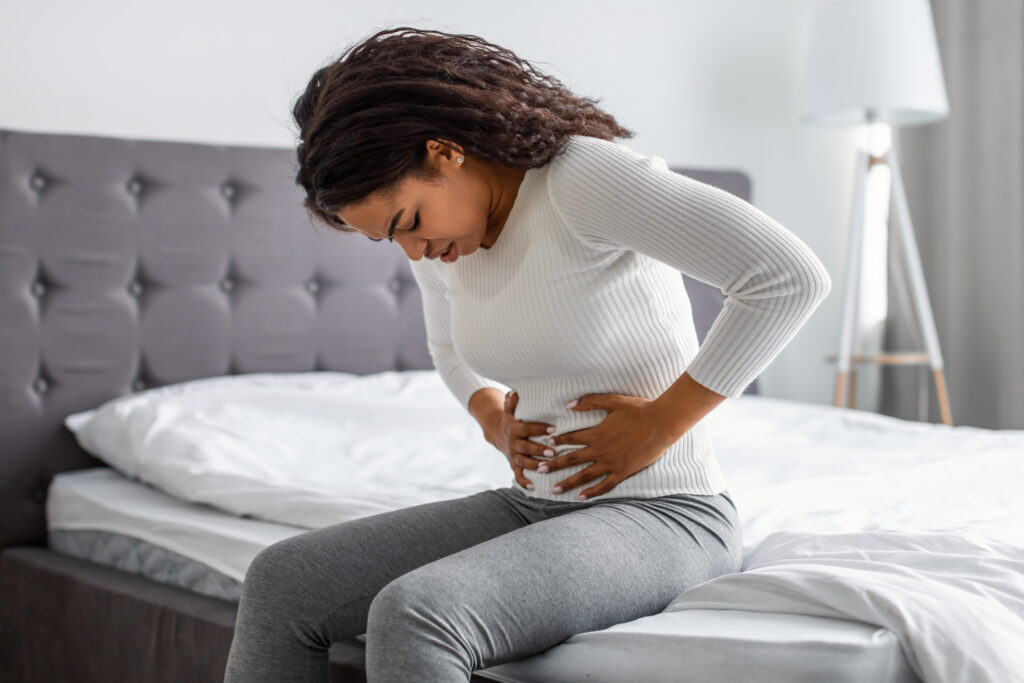By Karina Hoan, M.D., gynecology, at The Portland Clinic

Q: Are painful periods a sign of endometriosis?
Mild menstrual cramps that improve with over-the-counter medication are normal. But when pelvic pain and cramping during your period is debilitating and prevents you from participating in normal daily life — that is not normal, and is often a sign of endometriosis.
Q: What is endometriosis?
Endometriosis is an inflammatory disorder that occurs when cells from the inner lining of your uterus (the endometrium) grow in other places, such as around your ovaries, fallopian tubes or pelvic lining. These growths, or “implants,” act like the cells inside the uterus: they thicken, break down and bleed with each menstrual cycle. This process irritates the surrounding tissue and causes inflammation, scar tissue and adhesions (bands of scar tissue that can stick to organs), all of which can cause severe pain and lead to fertility issues.
Q: Can you develop endometriosis as a teenager?
Yes — for some people, the painful symptoms begin with the very first period. A classic description is, “As soon as I started having periods, I started missing school days.” For others, the symptoms are more progressive. Often, after years of pain with their periods, patients develop pain outside of their periods, with sex, and with bowel movements and urination.
Q: Does endometriosis pain stop after menopause?
Typically, menstrual pain resolves when menopause is reached (when menstruation has ceased for 12 months). However, if endometriosis involves the ovaries (endometriomas), symptoms can continue after menopause, since the ovaries continue to function intermittently for another 10-15 years. If your endometriosis causes bowel or bladder symptoms, these may continue after menopause, as well.
Q: Are there ways to reduce my pain without medication or surgery?
Getting regular, moderate exercise and moving toward an anti-inflammatory diet are two low-key strategies that you can try on your own to improve your symptoms. Many people with endometriosis report improved pain and other benefits when they add moderate exercise to their routines. Eating fewer foods that trigger inflammation (e.g., sugar, fried foods, high-fat dairy) and more foods that fight inflammation (e.g., vegetables, fruits, beans, nuts) has no downside and could improve your health in other ways, too.
Q: What medical treatments are available?
Your doctor may recommend that you take over-the-counter non-steroidal anti-inflammatory drugs (NSAIDs), such as Ibuprofen or naproxen, to help with painful periods. In conjunction with NSAIDs, hormone therapy is an effective way to reduce pain.
Hormonal contraceptives, such as low-dose birth control pills/patch/ring or a progestin IUD, are often very effective in controlling symptoms. These therapies slow the endometrial tissue growth and decrease the incidence of new endometriosis implants.
Other options that are more specific to endometriosis include Orlissa (a pill) and Lupron Depot (an injection). These suppress the production of estrogen and other hormones coming from your ovaries, which causes the endometriosis to shrink.
While not everyone can tolerate hormonal therapies, the vast majority of people tolerate them very well and get significant relief for a long time.
Outside of hormone therapy, prescription-based non-narcotics such as gabapentin (a nerve medication) or Flexeril (a muscle relaxer) can help relieve severe pain when NSAIDs aren’t enough.
Q: When is surgery considered?
Medical management is always the first approach to pelvic pain and suspected endometriosis. However, if a patient is experiencing infertility or has persistent and/or worsening pelvic pain despite medical treatment, surgery is considered.
When considering surgery, it’s important to know that approximately 30% of patients have persistent or recurrent pelvic pain after conservative endometriosis surgery. The likelihood of recurrent symptoms is greatly reduced if all endometriosis implants are removed and if hormonal suppression is continued after surgery.
Q: What does surgery involve? Will I need a hysterectomy?
During the surgery, all of the diseased and inflamed tissue is removed laparoscopically, through tiny incisions, and in most cases the uterus, fallopian tubes and ovaries are left in place. Most people with endometriosis don’t require a hysterectomy (removal of the uterus). However, for those who have no plans for a future pregnancy, hysterectomy may be an option that can reduce the risk of recurrence.
Q: Why aren’t the ovaries routinely removed?
Removing the ovaries (oophorectomy) causes surgical menopause. Since early menopause carries an increased risk of heart disease, brittle bones and shortened life expectancy, removing the ovaries is considered only for patients with severe disease or intractable pain after more conservative approaches.
Q: How long is the recovery?
Depending on the exact procedure performed (and how strenuous your job is), most people return to work about 1-2 weeks after their procedure.
Q: How effective is surgery?
When performed by a surgeon who specializes in endometriosis, surgery is highly effective. Once all of the diseased tissue has been removed from the pelvis, patients can enjoy years of pain-free living.
With the ovaries still in place, however, the risk of recurrence remains. The good news is that with today’s excellent surgical techniques, this risk is much lower than it once was. While a second surgery years or decades later is still a possibility, it’s no longer something that you have to expect.
Q: Does surgery affect fertility?
It could, in a good way. There’s quite a bit of data showing enhanced fertility after the diseased tissue is removed, mainly because the decreased inflammation allows the fallopian tubes to function normally.
Q: After surgery, does hormone therapy continue?
Yes. Assuming that we find a hormonal therapy that you tolerate well before surgery, continuing to take it afterwards as “suppressive” treatment will increase your symptom-free disease state.
Q: What do you wish everyone knew about endometriosis?
As a society, we tend to think of all menstrual pain as normal, so endometriosis often goes unrecognized. But I want everyone to know this: pain that is incapacitating is not normal. And this painful condition isn’t uncommon: endometriosis affects 10-15% of the entire menstruating population.
Everyone should talk to their physician or gynecologist about their own experience with their periods. A provider who is experienced in diagnosing and treating endometriosis can help you determine whether or not your symptoms are normal. If endometriosis, fibroids or other issues are causing your pain, treatment can help you get back to living your life fully, every day of the month.
Read Dr. Hoan’s blog post on fibroids and other causes of pelvic pain.


